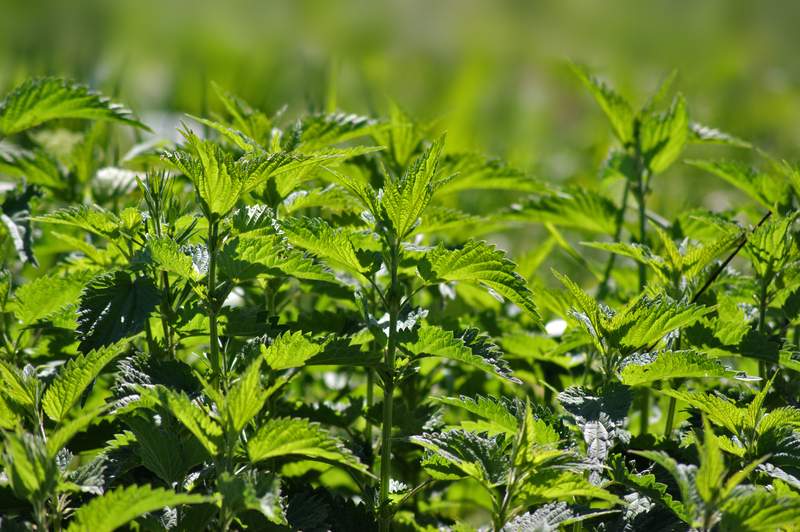Secrets to growing healthy and flourishing orchids
Posted on 15/09/2025
Secrets to Growing Healthy and Flourishing Orchids
Orchids have long been admired for their stunning blooms and unique forms, drawing the fascination of gardeners and plant lovers around the globe. While these exotic beauties were once considered the province of expert horticulturists, the truth is that, with the right knowledge, anyone can grow healthy and flourishing orchids at home. This comprehensive guide reveals not only the secrets to successful orchid cultivation but also debunks common myths, providing you with actionable steps and professional tips for reliable results. Let's dig deeper into what it takes to help your orchids thrive year-round!
Understanding Orchids: Know Your Plant
Before diving into maintenance strategies, it's essential to understand the orchid family. There are over 25,000 species and more than 100,000 hybrids, making orchids one of the largest plant families in the world. Their diversity means different types require different care, but several fundamentals remain consistent for most varieties grown at home.
Main Types of Orchids for Home Cultivation
- Phalaenopsis (Moth Orchids): One of the easiest and most popular, ideal for beginners.
- Cattleya: Known for their vibrant, large flowers with a delightful fragrance.
- Dendrobium: Appreciated for their long-lasting blooms and upright stems.
- Oncidium: Often called "dancing ladies" for their unique floral shapes.
- Vanda: Revered for their dramatic colors and open-root growing habit.
Understanding the specific requirements for your orchid type is the cornerstone of ensuring a healthy orchid that rewards you with abundant blooms.

Secret #1: Light the Way to Blooming Success
One crucial factor for robust orchid growth is light. Orchids need bright, indirect sunlight to thrive. Too little light, and you'll see limp leaves and scarce blooms; too much, and leaves may scorch or develop red spots.
Optimal Lighting Tips
- Phalaenopsis: Prefers east or west-facing windows with filtered light; avoid direct, harsh rays.
- Cattleya and Vanda: Higher light needs. South-facing window or artificial grow lights work best.
- Oncidium and Dendrobium: Enjoy bright but indirect light--think sheer curtains or dappled light.
Pro Tip: If your orchid isn't blooming, increase its light exposure gradually. Dark green leaves usually indicate insufficient light, while yellowish tones suggest too much.
Secret #2: Mastering Watering Techniques
Overwatering is the most common cause of orchid demise, often resulting in root rot. Orchids are epiphytes in nature--meaning they grow on trees and have roots exposed to air--so they require excellent drainage and careful watering.
Guidelines for Watering Orchids
- Water orchids once a week during growing season and every 10-14 days during dormant periods.
- Always use room-temperature, low-mineral water - distilled or rainwater is best.
- Water early in the day to allow roots to dry by nightfall.
- Let pots drain thoroughly; never let them sit in water.
Top Secret: Stick your finger in the potting medium--if it's dry about an inch down, it's time to water. Err on the side of underwatering rather than overwatering for most orchid species. The roots should be silvery-green when dry and bright green after watering.
Secret #3: Choose the Right Orchid Potting Medium
Orchid roots need air! Traditional soil is far too dense for most orchids. Instead, opt for specialty orchid mixes that provide the balance of air and support these tropical plants need.
Best Potting Mixes for Thriving Orchids
- Bark Mixes: Most common and suitable for Phalaenopsis, Cattleya, and many hybrids.
- Sphagnum Moss: Retains more moisture--good for smaller orchids or dry environments; use with caution to avoid rot.
- Coconut Husk Chips: Long-lasting option that balances moisture and airflow.
- Perlite or Charcoal: Often added to enhance aeration and prevent medium breakdown.
Repot your orchid every 1-2 years or when the potting medium becomes compacted or decomposed. This ensures optimal root health and prevents disease build-up, a crucial factor for vigorous orchid growth.
Secret #4: Provide Perfect Humidity and Airflow
Orchids originate from tropical and subtropical regions--they love humidity but not at the expense of fungal diseases. Most orchids thrive in humidity levels between 40-70%.
Humidity Secrets for Orchids
- Use a humidity tray: Place a saucer of pebbles and water beneath the orchid pot (the pot should never stand in water).
- Mist leaves lightly in the morning if indoor air is very dry.
- Group orchids together: This increases local humidity naturally.
- Ensure good air circulation by using fans or opening windows--stagnant air increases disease risk.
Insider Tip: A bathroom with filtered light is often the perfect location for many orchid types due to its naturally higher humidity.
Secret #5: Feeding Orchids the Right Way
Orchids need nutrients--but less is more. Over-fertilization can burn roots and damage plants. For lush, healthy orchids, use a balanced fertilizer (20-20-20) at quarter-strength, specifically formulated for orchids.
Fertilizing Guidelines
- Fertilize once every 2-4 weeks during active growth (spring and summer).
- Stop or reduce fertilizing during winter or when the plant is dormant.
- Use a water-soluble fertilizer and flush the potting medium with plain water monthly to prevent salt buildup.
The popular phrase "weakly, weekly" applies: dilute your fertilizer more than you think necessary and use it regularly during growth periods.
Secret #6: Temperature Tricks for Happy Orchids
Orchids are sensitive to temperature changes. Most common types prefer daytime temperatures between 65?F and 80?F (18?C to 27?C), and a slight drop at night to trigger blooming.
Orchid-Specific Temperature Advice
- Phalaenopsis: Enjoys warmer conditions--avoid long cold drafts or sudden temperature drops.
- Cattleya and Oncidium: Appreciate slight night-time cooling to spur flowering.
- Dendrobium: Some types need a more significant temperature drop at night for several weeks to initiate blooming.
Expert Secret: Placing orchids near (but not touching) an open window in late summer or early autumn can encourage flower spikes due to the natural temperature differential.
Secret #7: Pruning and Repotting for Continued Flourishing
Proper pruning extends plant health and encourages future blooms. Dead, yellow, or diseased leaves should be removed with sterile scissors. After flowers fade, trim the flower spike just above a node (for Phalaenopsis) or at the base (for others, as needed).
When and How to Repot Orchids
- Repot every 1-2 years to refresh the medium and check for root health.
- Always upsize pots only slightly; too much space invites rot.
- Soak the orchid beforehand for easier handling and less root stress.
- Use sterile equipment to prevent disease transmission.
Insider Tip: Orchid roots often grow outside the pot--this is normal! Only trim if dead or mushy; healthy roots should be left undisturbed.
Secret #8: Troubleshooting Common Orchid Problems
- Yellowing Leaves: Could indicate overwatering, insufficient light, or natural aging. Diagnose the cause and adjust accordingly.
- Root Rot: Symptoms include black, mushy roots. Remedy by removing the affected roots and repotting into fresh, airy medium.
- Lack of Blooms: Check for inadequate light, insufficient feeding, or lack of temperature changes.
- Pests: Watch for mealybugs, scale, and spider mites. Treat early with insecticidal soap or alcohol wipes.
- Leaf Spots or Black Tips: Can be fungal or bacterial--improve airflow, avoid wetting leaves, and use appropriate treatments.
With careful observation and prompt intervention, most orchid problems can be nipped in the bud--literally!
Secret #9: Encourage Stunning Blooms with Stress Techniques
Many orchids need a little encouragement to bloom. Clever use of "good stress"--such as lowering nighttime temperatures or slightly withholding water--can activate dormant flower spikes.
How to Promote Orchid Flowering
- Cool-Down Period: Reduce night temperature by 10?F for 2-3 weeks in autumn.
- "Drought" Signal: For some types (like Dendrobium), allow the potting medium to almost dry out before watering when not in active leaf growth.
- Return to normal routines once you see new spikes or buds forming.
Advanced Tip: Simulating the orchid's natural environment triggers blooming--observe how your specific orchid responds for best results.
Secret #10: Long-Term Orchid Wellness
To enjoy continually thriving, lush orchids, it's important to provide steady, consistent care while being attuned to changes. Regularly inspect roots and leaves, keep a care journal, and experiment gradually with light, feeding, and humidity to match your home's unique environment.
Golden Rules for Flourishing Orchids Year After Year
- Observe deeply: Each orchid will teach you what it needs through growth and flowering patterns.
- Be patient: Orchids may take months to bloom, but the display is worth the wait!
- Educate yourself: The more you know about your specific orchid type, the greater your horticultural success.
Orchid gardening is a blend of science, art, and patience. With these secrets and a spirit of curiosity, anyone can master the art of growing robust and beautiful orchids at home.

FAQs on Growing Orchids
- How often should I mist my orchids? Only mist orchids in very dry conditions, and always do so in the morning to allow for leaf drying.
- Can orchids be grown outdoors? In warm, sheltered climates, some species (like Cymbidium and Dendrobium) can thrive outside, but watch for temperature drops or harsh sun.
- Why are my orchid leaves limp? Usually a sign of overwatering or root problems. Inspect roots and adjust your watering schedule.
If you follow these practical, science-backed secrets to growing orchids, you'll be rewarded with enduring health and spectacular blooms from your plants, season after season.
Conclusion: The Joy of Healthy Orchids
The art of growing orchids comes down to a mix of understanding, consistency, and gentle experimentation. Armed with the above secrets, you'll be able to create the conditions where your orchids can truly flourish--trusting your instincts while learning from your plants along the way. Not only will your home be graced with their beauty, but your gardening confidence will also bloom alongside your orchids.
Start applying these secrets today, and turn your orchids into show-stoppers for years to come!

